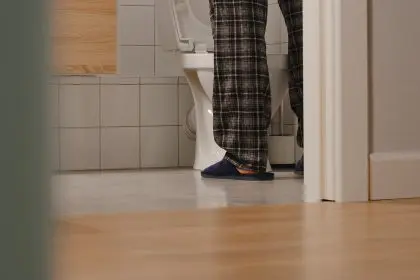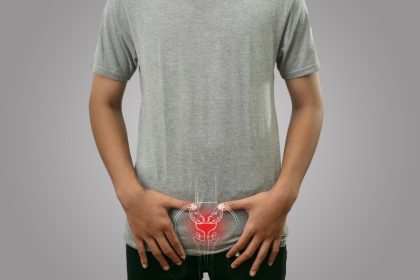Millions of men worldwide experience urinary problems, yet many dismiss their symptoms as an unavoidable part of aging. The gradual onset of these issues often means warning signs go unnoticed until they significantly impact daily life and relationships. Understanding these symptoms and addressing them promptly not only leads to more effective treatment but can prevent serious complications down the road.
The reluctance many men feel about discussing urinary issues creates an unfortunate barrier to early intervention. This hesitation, often rooted in embarrassment or the mistaken belief that nothing can be done, prevents many from seeking help during the critical early stages when treatment options are most effective and least invasive.
How the male urinary system changes with age
The male urinary system undergoes several changes as men grow older, creating vulnerability to various issues that can affect urination. Understanding these natural changes helps explain why problems develop and what can be done to address them.
The prostate gland sits at the center of many urinary issues. This walnut-sized gland surrounds the urethra just below the bladder and typically grows larger as men age. By age 60, more than half of all men develop benign prostatic hyperplasia (BPH), a non-cancerous enlargement that can compress the urethra and obstruct urine flow.
Bladder changes also contribute significantly to urination problems. Over time, the bladder muscle may become overactive, causing sudden, strong urges to urinate. Alternatively, it might become underactive, making it difficult to completely empty the bladder. These changes often develop gradually, making them easy to overlook until symptoms become more pronounced.
The complex nervous system controlling urination can also change with age. Signals between the brain and bladder may become less efficient, affecting the coordination needed for normal urination. Various medical conditions, including diabetes, stroke, and Parkinson’s disease, can further complicate this delicate system.
Early warning signs that should prompt medical attention
Recognizing the early indicators of urinary problems allows for prompt medical evaluation and more effective treatment. These warning signs often appear gradually, making them easy to dismiss until they significantly impact quality of life.
Increased urination frequency, particularly at night, often serves as one of the first noticeable changes. Many men initially attribute nighttime bathroom trips to drinking fluids before bed, not realizing it could signal developing prostate or bladder issues. When getting up multiple times each night becomes routine, it warrants medical attention.
Changes in the urine stream provide another important clue. A weakened stream, difficulty starting urination, stopping and starting while urinating, or dribbling at the end all indicate potential problems with the prostate or urinary system. These changes typically develop slowly, making them easy to overlook or accept as normal aging.
The sensation of incomplete emptying after urination represents another common early warning sign. This feeling occurs when the bladder cannot fully contract due to obstruction or muscle weakness. Beyond discomfort, this incomplete emptying can lead to urinary tract infections if consistently left unaddressed.
Pain or burning during urination should never be ignored as it often signals infection or inflammation requiring prompt treatment. Similarly, blood in the urine, while alarming, provides an important warning sign that requires immediate medical attention to rule out serious conditions, including cancer.
Urgency—the sudden, compelling need to urinate that cannot be delayed—can significantly impact daily activities and social engagements. This symptom often indicates an overactive bladder but may also result from prostate enlargement or neurological changes affecting bladder control.
Modern approaches to diagnosis and treatment
The medical approach to male urinary problems has evolved significantly in recent years, moving beyond simple medication to comprehensive treatment plans tailored to each individual. This evolution offers men more effective options with fewer side effects.
Initial evaluation typically includes a detailed medical history and physical examination. Healthcare providers may order urine tests to check for infection, blood, or other abnormalities. Additional assessments may include measuring post-void residual urine with ultrasound, urine flow testing, prostate-specific antigen (PSA) blood tests, and specialized bladder function studies.
Treatment often begins with lifestyle modifications that can significantly improve urinary symptoms. These include managing fluid intake timing, moderating alcohol and caffeine consumption, strengthening pelvic floor muscles through targeted exercises, and maintaining a healthy weight through proper diet and regular physical activity.
For many men, medication provides effective symptom relief. Alpha blockers relax the muscles in the prostate and bladder neck, improving urine flow in cases of BPH. 5-alpha-reductase inhibitors can actually shrink the prostate over time for men with significant enlargement. Other medications target specific conditions like overactive bladder by calming bladder muscle contractions or reducing sudden urges.
When conservative approaches prove insufficient, minimally invasive procedures offer effective alternatives to traditional surgery. These include techniques that remove excess prostate tissue using laser energy, water vapor, or mechanical devices. Many of these procedures can be performed on an outpatient basis, with minimal recovery time and reduced risk of side effects compared to traditional surgery.
For more severe cases, surgical intervention may become necessary. Modern surgical techniques, including robotic-assisted procedures, allow for precise treatment with smaller incisions, reduced bleeding, and faster recovery times than traditional approaches. These advances make surgery a more viable option for men who might previously have avoided treatment due to concerns about recovery or side effects.
How urinary problems affect daily life and relationships
The impact of urinary problems extends far beyond physical discomfort, often affecting nearly every aspect of a man’s life. Understanding these wider effects helps explain why prompt treatment proves so important for overall wellbeing.
Sleep disruption remains one of the most significant consequences. Waking multiple times each night to urinate fragments sleep patterns, leading to daytime fatigue, irritability, and reduced cognitive function. This chronic sleep deprivation can affect work performance, driving safety, and overall quality of life.
Many men develop anxiety about bathroom access, leading them to restrict activities or avoid situations where facilities might be unavailable or inconvenient. This can mean declining social invitations, avoiding travel, or even limiting work opportunities. The resulting isolation can contribute to depression and further diminish quality of life.
The impact on intimate relationships often goes undiscussed but proves significant for many couples. Nighttime urination disrupts not only the man’s sleep but often his partner’s as well. Sexual function may also be affected by certain urinary conditions or their treatments, creating additional relationship challenges if not addressed openly.
Workplace challenges emerge for many men with urinary problems. Frequent bathroom breaks can interrupt workflow and productivity. Some men report anxiety about meetings or other situations where they cannot easily excuse themselves. These workplace concerns add another layer of stress to an already challenging condition.
The emotional burden often includes embarrassment, frustration, and sometimes depression. Men accustomed to physical independence may struggle with these new limitations. The gradual loss of control over such a basic bodily function can significantly impact self-esteem and mental wellbeing if left unaddressed.
Prevention strategies that actually work
While some urinary changes come with aging, several evidence-based strategies can help maintain urinary health and prevent or delay the onset of problems. These approaches focus on overall wellness as well as specific urinary system health.
Maintaining a healthy weight through proper diet and regular exercise significantly reduces the risk of developing urinary problems. Excess weight increases pressure on the bladder and can contribute to incontinence. Studies show that even modest weight loss improves urinary symptoms in overweight men.
Proper hydration practices balance the need for adequate fluid intake with the management of urination frequency. While limiting fluids might seem logical for reducing bathroom trips, inadequate hydration actually increases the risk of urinary tract infections and kidney stones. Instead, the focus should be on timing fluid intake, with more consumption earlier in the day and less in the evening.
Avoiding bladder irritants can reduce symptoms for many men. Common irritants include caffeine, alcohol, artificial sweeteners, spicy foods, and acidic fruits and juices. Each man may react differently to potential irritants, so identifying personal triggers through elimination and reintroduction can prove helpful.
Scheduling regular urological check-ups becomes increasingly important as men age. Annual screenings typically begin around age 50 for men without risk factors, and earlier for those with family history or other risk factors. These evaluations can identify developing problems before they cause significant symptoms or complications.
Pelvic floor exercises, while often associated with women’s health, provide benefits for men as well. Strengthening these muscles improves bladder control and may reduce symptoms of both incontinence and overactive bladder. Healthcare providers can provide guidance on proper technique for maximum effectiveness.
Managing chronic medical conditions properly helps prevent urinary complications. Conditions like diabetes, hypertension, and neurological disorders can contribute to urinary problems if poorly controlled. Following treatment plans for these conditions protects not only overall health but urinary function as well.
When to seek immediate medical attention
While many urinary symptoms warrant routine medical evaluation, certain situations require urgent or emergency care. Understanding these distinctions helps men make appropriate decisions about when and how to seek help.
Sudden inability to urinate at all, known as acute urinary retention, requires emergency treatment. This painful condition typically results from complete blockage of the urethra and can lead to kidney damage if not promptly addressed. Emergency room treatment usually involves catheterization to drain the bladder, followed by evaluation to determine the underlying cause.
Visible blood in the urine, particularly when accompanied by pain, demands prompt medical attention. While sometimes caused by minor issues like infection, bloody urine can also signal more serious conditions including cancer. Early evaluation provides the best chance for effective treatment regardless of the cause.
Severe pain in the lower abdomen, back, or sides may indicate kidney stones or infection that has spread to the kidneys. These conditions require immediate medical care to prevent complications. Treatment depends on the specific diagnosis but often includes pain management, antibiotics for infection, and sometimes procedures to remove or break up kidney stones.
Urinary symptoms accompanied by fever, chills, or confusion suggest a potential infection that has spread beyond the urinary tract. This condition, known as urosepsis, can become life-threatening without prompt treatment. Emergency care typically includes intravenous antibiotics and supportive measures while identifying and addressing the source of infection.
The future of male urinary health
Ongoing research continues to advance understanding and treatment of male urinary problems. These developments offer hope for better outcomes and improved quality of life for the millions of men affected by these conditions.
New medications with fewer side effects are under development, targeting the causes of urinary symptoms more precisely than current options. These include drugs that combine multiple mechanisms of action to address complex urinary issues with single medications rather than requiring multiple prescriptions.
Technological advances in minimally invasive treatments continue to reduce recovery time and side effects while improving long-term outcomes. These include refinements of existing techniques as well as entirely new approaches that may provide relief with even less disruption to daily life.
Greater emphasis on preventive care and early intervention within the medical community promises to help men address urinary issues before they significantly impact quality of life. This shift includes improved screening protocols, better education for primary care providers, and public awareness campaigns to reduce stigma and encourage men to seek help sooner.
The growing recognition of the connection between urinary health and overall wellbeing has expanded treatment approaches to address not just physical symptoms but their psychological and social impacts as well. This holistic perspective leads to more comprehensive care and better outcomes for men dealing with these challenges.
With continued research, improved treatments, and greater awareness, the future holds promise for men affected by urinary problems. The key remains early recognition and prompt medical evaluation of changes in urinary function, allowing for intervention when treatments are most effective and least invasive.












